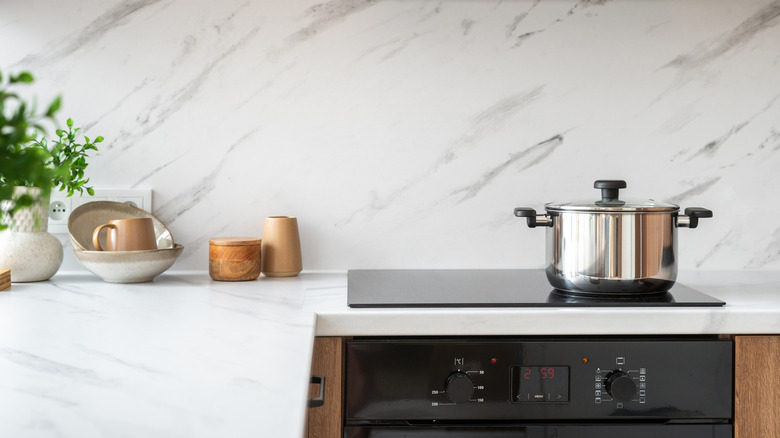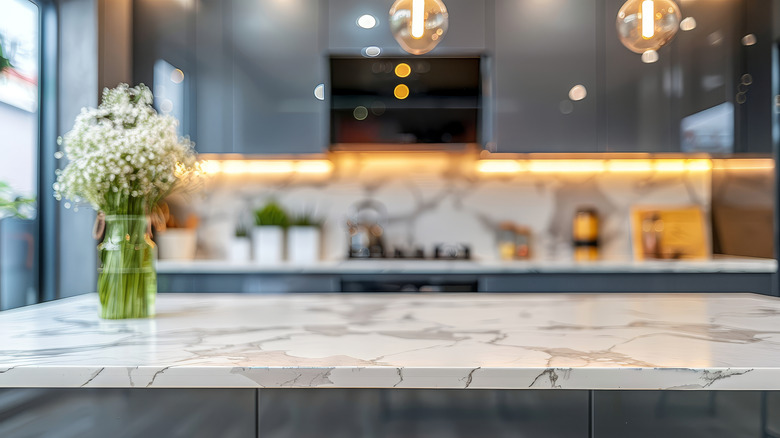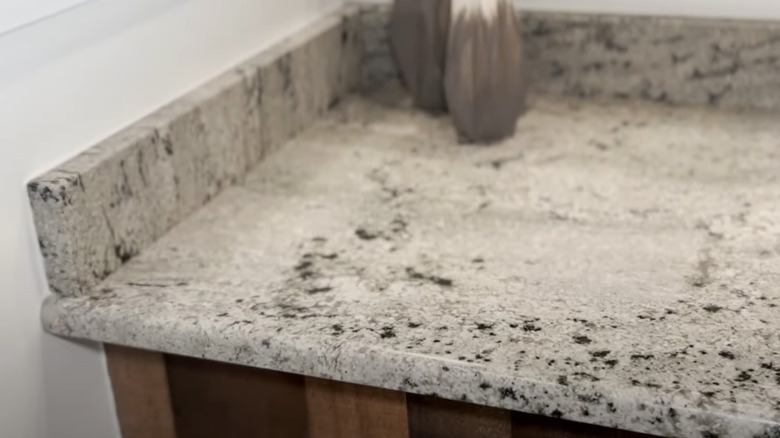Pencil Edge Countertops Vs Eased: Which Is Better For Home Value?
When you're planning a kitchen remodel, choosing a material isn't the only tricky choice you'll need to make about your countertops — you'll also need to decide what edges your surfaces will have. This might seem like a small, inconsequential detail, but your countertop's edges can impact both the functionality and visual appeal of your space. Certain cuts are more expensive than others, so you'll need to review your options with respect to your kitchen renovation budget. Additionally, the edge profile you select can influence the durability of your countertops — and sometimes even the safety of your space. Once you start researching edge profiles, you'll probably come across two common types: the pencil edge and the eased edge.
The pencil edge and the eased edge are both budget-friendly profile choices, and neither is better for home value on its own. But they can accentuate the aesthetics of your countertops, which do impact home value. With that in mind, you might want to choose the edge that makes your countertops look better with respect to the rest of your interior design. If your space favors a more modern, minimalist aesthetic, you might opt for the eased edge, since it appears a bit more sharp and sleek. If you have a contemporary or traditional home, you might like the softer look that comes with the pencil edge's rounder profile instead. Of course, there are more elements of these edge profiles to consider besides their looks.
Reasons to use eased countertop edges in your kitchen
The top corner of an eased edge countertop is rounded slightly, with a ⅛-inch radius. The bottom, meanwhile, has a 90-degree angle. Visually speaking, the eased profile looks about as close to a fully squared edge as you can get without actually having one. This makes it a great choice for kitchens with sleeker, sharper lines or for smaller, tighter spaces. The durability of the eased edge is also one of its strengths. The slight turn on the top corner helps protect the countertop from chipping if you drop something on it. This can be especially important when the surface is made out of a natural stone material such as marble, granite, or soapstone. Eased edges are also easier to clean compared with more complex edge profiles, such as ogee or cove. However, the same is true for the pencil edge.
The simplicity of the eased edge could be either a benefit or a drawback, depending on the design of your kitchen. If you'd like your countertops to look more ornate or eye-catching, you might want to consider other out-of-the-ordinary edge profiles you might not have heard of instead, such as dupont or waterfall. Another potential drawback to the eased edge is that it can sometimes make damages on the sides of the countertops more visible than other edges would, which could potentially affect the impressions that potential buyers gather from your space.
Why you might want to consider pencil edge countertops instead
Pencil edge countertops have a ¼-inch radius removed from the top, and a one sixteenth of an inch curve cut from the bottom. They're therefore a bit more rounded, on the top and bottom, than eased edges. If you compare the two styles visually, you'll notice that the pencil edge looks softer, smoother, and less dramatic. However, it's still a relatively square profile, especially compared with a bevel or bullnose edge. This makes it a versatile choice that suits all kinds of kitchen designs. A pencil edge is also a better selection than an eased edge for homeowners that are concerned about child-proofing their space. The slightly rounded bottom of the pencil edge makes it a little bit less blunt than the square bottom corner of the eased edge, which could be important should someone bump their head against it.
There are a few drawbacks that come with pencil edges that you'll want to be aware of before you invest in them. First, they're more prone to watermarks thanks to their more rounded edges. But as long as you regularly wash the countertops, this shouldn't be much of an issue. Second, the countertop might look a tad thinner than it would with an eased edge, because the manufacturer removes slightly more material to create the profile. Still, this likely won't impact your home's value as much as other countertop choices that are making it harder to sell your house, like laminate and tiles.


